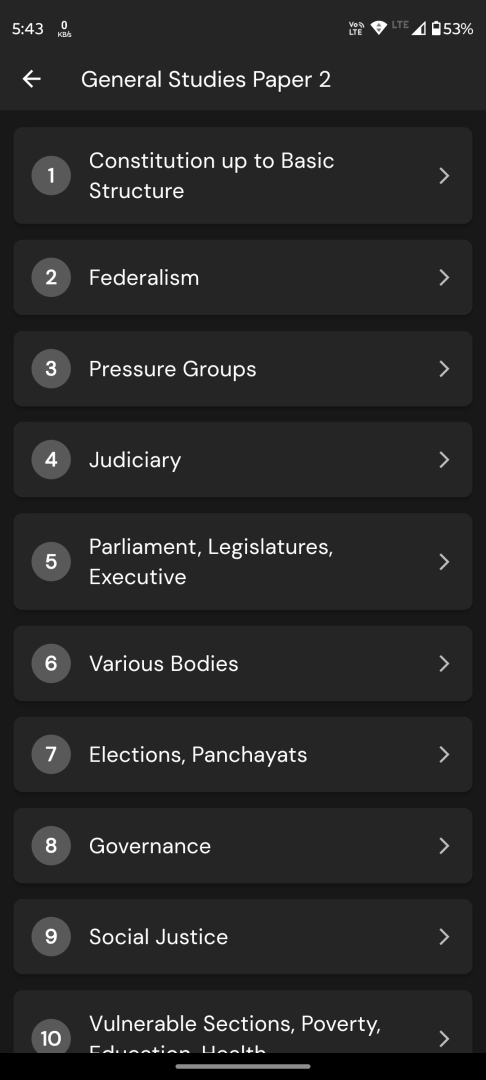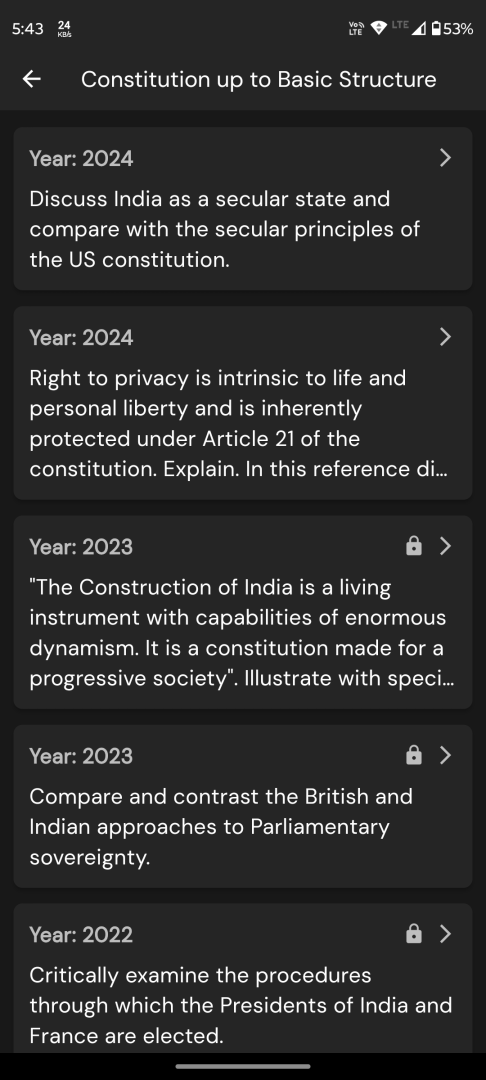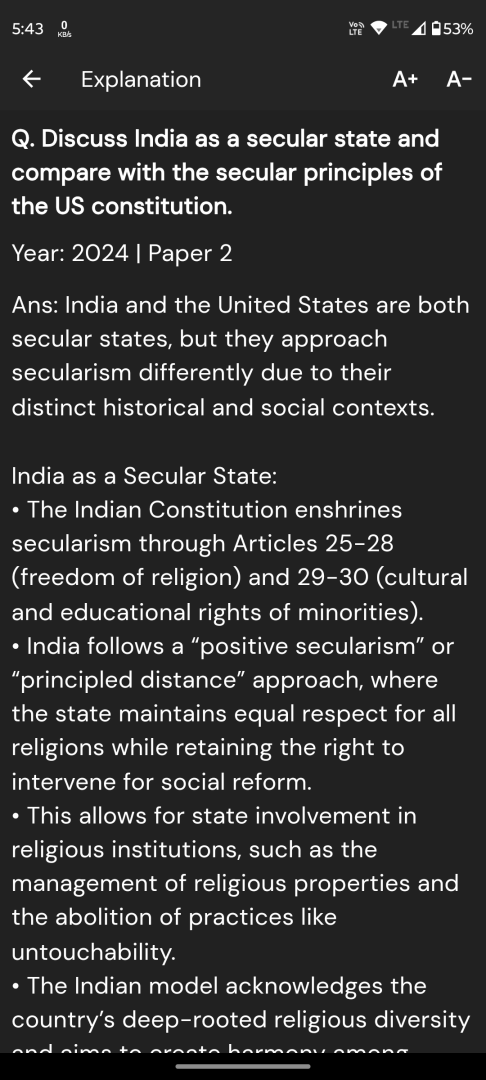Q. Three teams P, Q, R participated in a tournament in which the teams play with one another exactly once.
A win fetches a team 2 points and a draw 1 point. A team gets no point for a loss. Each team scored exactly one goal in the tournament. The team P got 3 points, Q got 2 points and R got 1 point.
Which of the following statements is/are correct?
I. The result of the match between P and Q is a draw with the score 0-0.
II. The number of goals scored by R against Q is 1.
Which of the statements given above is/are correct?
(a) I only
(b) II only
(c) Both I and II
(d) Neither I nor II
Correct Answer : (c) Both I and II
UPSC Prelims 2025 CSAT
Explanation :
There are three matches (each pair plays once):
1. P vs Q
2. P vs R
3. Q vs R
We know:
• A win gives 2 points, a draw 1 point each, a loss 0 points.
• P’s total = 3 pts, Q’s total = 2 pts, R’s total = 1 pt.
• Each team scored exactly 1 goal in the whole tournament.
Step 1: Find who beat whom (points condition)
– P has 3 points from two games ⇒ P must have one win (2 pts) and one draw (1 pt).
– Q has 2 points ⇒ possible splits are (2+0) or (1+1).
– R has 1 point ⇒ one draw and one loss (1+0).
Try the two ways P can get 3 points:
Case A:
• P beats R (P=2 pts, R=0)
• P draws with Q (P=1 pt, Q=1)
⇒ P total 3, Q so far 1.
Q needs 2 → Q–R must be a draw (Q+1=2, R+1=1).
R’s total = 1 (0 from P, 1 from Q).
This fits perfectly.
Case B:
• P beats Q (P=2, Q=0)
• P draws with R (P=1, R=1)
⇒ P total 3, R so far 1.
Q needs 2 points → Q–R must be a win for Q (Q+2=2, R+0=1).
R’s total would be 1 (1 from P, 0 from Q), OK.
But as we’ll see in Step 2, Case B fails the “one goal each” condition.
So only Case A survives the points check.
Step 2: Distribute exactly one goal per team
Under Case A the results are:
P–R: P wins
P–Q: draw
Q–R: draw
Each team must score exactly 1 goal in total:
1. P has two games (win vs R, draw vs Q) but only 1 goal in all ⇒
• In the draw P–Q, P must have scored 0;
• In P–R, P must have scored its single goal ⇒ score 1–0.
2. R has two games (loss vs P, draw vs Q) and must total 1 goal ⇒
• In P–R (lost 0–1) R scored 0;
• In Q–R draw, R scored its 1 goal ⇒ Q–R is 1–1.
3. Q has two draws (with P and R) and needs 1 goal total ⇒
• In P–Q (draw) Q scored 0;
• In Q–R, Q scored its 1 goal ⇒ 1–1.
Final scores:
P–Q: 0–0
P–R: 1–0
Q–R: 1–1
Check statements:
I. “P vs Q is a 0–0 draw.” True.
II. “R scored 1 goal against Q.” True (in the 1–1 draw).
Therefore both I and II are correct.





